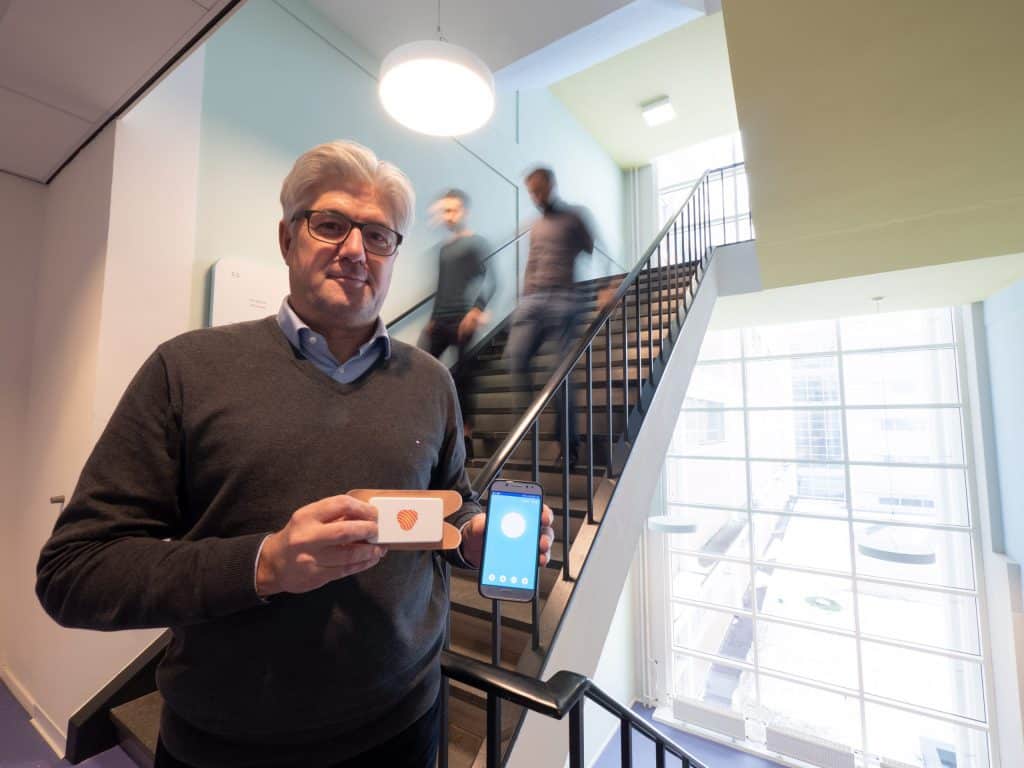Founder Bas Zeper has been working on Plasmacure since 2014, to make a difference for people suffering from chronic wounds. Together with CMO Koen Lim, he now faces the final hurdle: convincing doctors, hospitals, and insurance companies of the benefits of their product PLASOMA. “For the longest time, we had to say that the product was coming soon. Since 2020 it’s really on the market and we are helping patients.”
Plasmacure uses PLASOMA, a cold plasma system that was developed at Eindhoven University of Technology. Two years ago, they opened a second location in Nijmegen, on the Novio Tech Campus. Founder Bas Zeper: “Plasma technology already existed, we wanted to create a medical application. Now, we are able to tackle a big issue: wounds that do not heal. That is such a problem. With our innovative application, we can help patients suffering from it.”
Complicated but simple
According to Bas, the technique basically is very straightforward: “You only need air and electricity. First, we trap the air in the wound with our plasma pad. Then, with the help of electricity, we charge this air. A controlled discharge in the air creates plasma, which then kills the bacteria that refrain the wound from healing.”
“Plasma does three things”, explains Koen. “It kills bacteria, viruses and fungi, it promotes microcirculation, and it causes skin cells to regenerate. These three things all attribute to the healing process of the wound.” Furthermore, this form of wound therapy is based on a physical process. “There is no risk of bacterial resistance, which is very good news for the long term. And the results of our first clinical trials tell us that we have a solution for a problem that wasn’t solvable before. A study on diabetic foot ulcers demonstrated that the treatment is safe and well tolerated.”
The world of wound care
Chronic wounds are a major issue in the Netherlands. “It is estimated that 400,000 to 500,000 people suffer from wounds that last for months. A quarter of those wounds will never even close at all.” Plasmacure’s case studies show that the technology has a positive effect on wound healing. The result of the first 20 case studies: 60% of chronic wounds older than 1 year healed. “The wounds we treat are severe and are a great inconvenience to the patients. If we can make a difference, people with non-healing wounds would benefit greatly.”
“PLASOMA is for sale, now it is time to convince the entire medical world of the added value of our product. To do so, we are gathering clinical data. With the help of a European follow-up investment, two clinical trials have started to treat 250 patients.” The results of these studies will convince even more doctors, hospitals and insurance companies of their product.
Oost-NL is also funding their research. “One of the reasons why we chose to settle here on the Novio Tech Campus: there are plenty of opportunities for cooperation here. Our commercial and managerial activities are centred around Nijmegen. Also, the link the campus has with healthcare in Nijmegen and the surrounding area and the active network that is available are very important for us.”
Double steps
Parallel to this clinical phase, in which Plasmacure looks for further scientific evidence to support the proof of efficacy of their product, the company has also entered a commercial phase and demonstrates PLASOMA cold plasma system to interested parties. “We have been working on the trials for over a year”, Bas explains. “It is a time-consuming and extensive project, but thanks to investments, we can see it through. Now that PLASOMA is a readily available product, the trials are paying off.”
Bas enjoys these parallel roads. “We can research our possible impact, whilst our product is available for patients. Not all companies have the funds and time to do so. We get to see exactly how we are making a difference. That is all the motivation we need!”
Plasmacure’s clinical team had everything set up to start a European clinical study. “Unfortunately, Covid got in the way. It is vital to us to travel freely throughout Europe, because we want to introduce our product face to face. And supervising the clinical trials ourselves is essential. Our team moved the trial to the Netherlands.”
Above all, Bas and Koen are thrilled to have practitioners working with the cold plasma device. “Insurance companies may not yet reimburse, but treatment can be provided to those who need it.”

